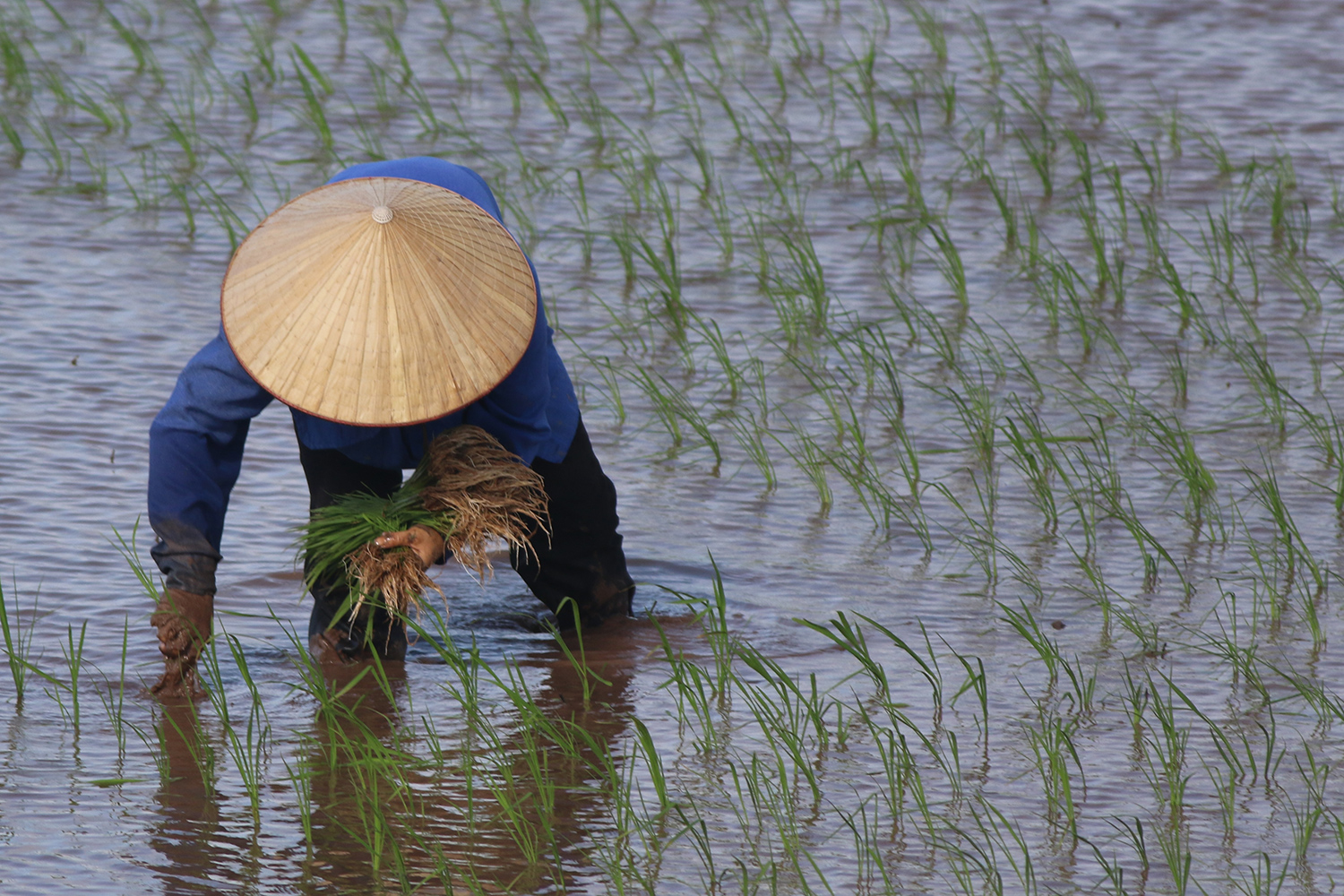IRRI, CCAFS, CCAC boost GHG mitigation in Vietnam to reach NDC targets

In Vietnam, rice is a dominant and important crop. Yet, traditional paddy rice production emits a significant amount of greenhouse gas (GHG), accounting for nearly 50% of the country’s agriculture emissions. As its contribution to fulfilling the Nationally Determined Contribution (NDC) targets, Vietnam has committed to cutting 8-25% of GHG emissions by 2030. The Vietnamese government is making efforts to move to low-carbon rice production as part of its NDC. Supporting this process, the International Rice Research Institute (IRRI), with support from the CGIAR Research Program on Climate Change, Agriculture and Food Security (CCAFS) and the Climate and Clean Air Coalition (CCAC), works to help the government build a climate-smart rice sector and achieve its NDC. Specifically, IRRI develops and implements alternate wetting and drying (AWD) in Vietnam to reduce methane emissions from rice production.
The problem
In Vietnam, continuously flooded rice cultivation is responsible for around 46% of GHG emissions from agriculture (MONRE, 2017), which contributes to worsening environment degradation and climate change. In 2017, Vietnam was among the 5 countries most affected by climate change according to the Climate Risk Index ranking, which reported that the country sustained damages of about 2.7 billion USD (MARD 2018). The Government of Vietnam has determined to take measures to reduce GHG emissions from rice production, including AWD technology. Its NDC implementation plan targets to apply water-saving technologies including AWD on 500,000-1,200,000 ha of rice land to potentially reduce 23-65% of agriculture emissions.
The solution
To support Vietnam’s NDC implementation, IRRI has been assisting the government to assess mitigation options, develop a plan for implementation, and measure impacts. The results of IRRI’s work will facilitate decisions in designing, financing, and implementing the expansion of the AWD technique. A blueprint page has been developed to exhibit this process, which includes activities such as:
- Suitability mapping. CCAFS, IRRI, and Vietnamese partners assessed the suitability for AWD application in the An Giang province. To date, these maps have been the best reference to support AWD implementation plans in An Giang province.

- Cost-Benefit Analysis. Different mitigation technologies in the Vietnam INDC have been compared in terms of mitigation potential and cost-effectiveness (see article). AWD has been proved to be cost-effective and have high mitigation potential.
- Emissions calculations. IRRI, CCAFS, and CCAC developed the Source-selective and Emission-adjusted GHG Calculator (SECTOR) tool for Cropland to measure GHG emissions, providing baseline data for planning and implementation of climate-smart interventions.
- Measurement, Reporting, and Verification (MRV). CCAFS, CCAC, and IRRI will begin development of an MRV framework and support tools to contribute to Vietnam’s MRV system.
- Investment plan. CCAFS, CCAC and IRRI developed an investment plan for outscaling of AWD in the Mekong River Delta. The investment plan is the most advanced document to guide investors and will be further strengthened to meet the needs of banks and other investors.
IRRI’s innovations and assistance are contributing to innovating rice production in Vietnam towards environmental, social, and economic sustainability.
